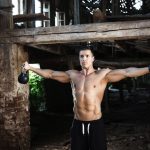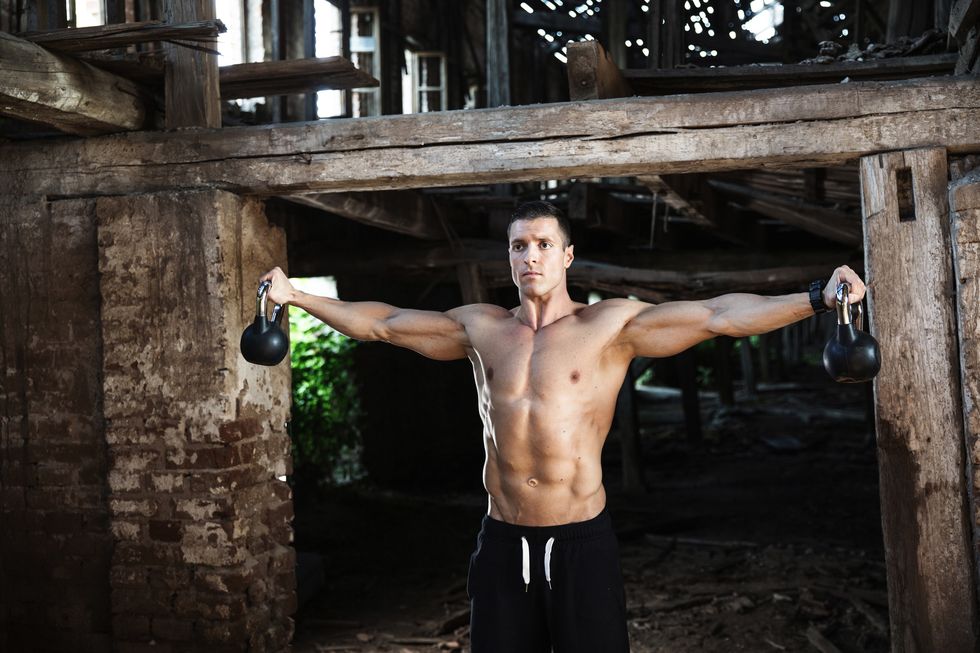

The calves and, above all, the forearms are, without a doubt, two of the most forgotten muscles in the fitness universe, along with the trapezius. But training them well is equally or more important than the rest of the groups, especially if you have plenty of time in the gym and even if you have the appropriate fitness equipment in each. For aesthetics and functionality, having strong forearms will improve your performance in exercises such as deadlifts or pull-ups, for example, in addition to preventing injuries… So get going and improve your grip with this workout. In addition, you will avoid pain in your wrists or lower back when carrying large amounts of weight.
Why do we have to work our forearms? In addition to gaining strength and for aesthetic reasons, to improve our grip, avoid injuries and provide more strength and power in exercises such as supine pull-ups, the French press for triceps or how to do the perfect biceps curl with dumbbells or a straight bar. . “There are many studies that relate grip strength to longevity of life, which is why it is very important to train the forearm”says our expert personal trainer Aldo Cornejo and trainer of the month at Men’s Health aka @aldokine on Instagram. Can you gain forearm muscle with body weight alone? “Clear, working different supports against the ground and also maintaining suspension either by doing pull-ups or simply hanging from a bar.
The best exercises for the forearms
1- Wrist flexions
Sitting on a bench with a dumbbell, We rest our arm on our thigh with our palm facing up and flex our wrist up and down, slowing down the movement as much as we can. It can also be performed with the palm facing down, but with much less weight so as not to hurt yourself with each repetition. Aim for more weight with the first movement, and fewer and higher repetitions with the second.
2- Forearm curl with barbell on bench
Kneeling, resting our arms on a bench, we flex our wrists up and down. You can perform it in pronation or supination and always controlling the weight that we are going to move to avoid untimely injuries.
3- Barbell invert curl or inverted curl with straight bar for biceps
Ideal for high repetitions and with little weight, your forearms will literally burn. Standing with a bar loaded or not, and your elbows as close to your body as possible, raise and lower your forearms in This exercise is a good finisher for the biceps, as it stimulates the muscle from another angle.
4- Forearm with rope
Our favorite exercise. Its mechanics are very simple: With a weight hanging from a rope, tied to a short bar, roll and unroll it several times. The muscle contraction is total and you will see how difficult it is for you to reach the end. It literally hurts a lot!
5- Spin a kettlebell
As simple as picking up a kettlebell with a certain weight, leaving it resting on a drawer and, Holding it with one hand, use the strength of your forearm to turn it to the other side. You just have to try not to lift too much weight to avoid injuring your forearm, wrist or elbow. If you have ever arm-wrestled with a friend, the movement you will perform is quite similar…
Why it is important to train your forearms
Yes ok It is not strictly necessary to exercise the forearms, in the same way as with the calves and trapezius, it is recommended. First for functionality, to improve the strength in your grips, not injure yourself as we mentioned before, and look better aesthetically. Who doesn’t like the veins on their forearms to stand out?
As for the best tips for training them, discard the typical devices that you squeeze with your hands and that do work the muscle, and opt for the 4 exercises that we have summarized for you. You will gain more muscle, volume and definition, and you will also work secondary muscles such as the biceps.
And when choosing an exercise, the one we like the most at Men’s, We bet on the inverted curl with a straight bar and a good finisher with a rope until the muscle is exhausted to the maximum. If your forearm doesn’t burn and the congestion is brutal, you haven’t finished your workout…
How to prevent forearm injuries
When it comes to repetitive activities like these forearm exercises or bicep curls, You must take a work break every certain series. It is recommended as a basic criterion that, for every 50 minutes of activity, you should take 10 minutes of minimum rest. You must take into account the causes of the most common arm injuries, since some of them can be prevented and avoid irreversible damage that will later terribly affect your training.
The most common injuries to the arms
Biceps sprain: inflammation at the point where the biceps passes in front of the elbow. It hurts when you make a fist or bend your elbow with force.
Triceps sprain: produced by a sudden extension of the elbow. You will feel a stab of pain at the top of your triceps due to inflammation of the tendon of the main muscle that stretches your elbow.
Olecranon bursitis: Also known as “dart thrower’s elbow.” It is a painful swelling in which the synovial bursa that protects the vertex of the elbow becomes inflamed.
Injury to the radio-humeral joint: damage to the external ligaments of the joint or its surface. It hurts when you bend, twist, or straighten your forearm. It is produced by twisting the arm downwards.
Tennis elbow: The forearm muscles or pronosupinators have their upper insertion on the humerus. When this insertion becomes inflamed, pain is felt on forced pronation and supination. When you pick up something with your elbow bent, pain occurs.
Golfer’s elbow or javelin thrower: It is an inflammation at the insertion point of the muscles and bone on the inside of the elbow. It appears due to recurrent stretching or strain of the muscle.
Pronator teres syndrome: inflammation of one of the muscles of the forearm, the pronator teres, caused by a strain of the muscle, especially in throws with a complete forearm turn. The front part hurts when bending the sole downwards with force.

Roberto Cabezas is a specialist in fitness, CrossFit, bodybuilding, training material, nutrition and sports supplementation at Men’s Health Spain. Graduated in Journalism from the Faculty of Information Sciences in Madrid, I have always liked sports. I played soccer, I practiced karate, tennis and now I am passionate about paddle tennis and training in the gym. I firmly believe that leading a healthy life, eating well and exercising daily, is essential for both the body and our mental health. And I encourage you to combat stress with fitness training through exercise routines.
One of my hobbies is shopping for food because I love eating, especially meat, but also fruit and healthy desserts. I don’t miss my daily protein shake and to recommend, try the peanut butter with banana, this is one of many of the recommendations that you can find among the nutrition content in which I write and discuss topics such as creatine, protein whey among others.
Professionally, before joining the Healthy Unit of Hearst Magazines, I spent almost 20 years in the magazines Teleindiscreta, TP and Supertele, of the same company, where I learned to be a journalist. Before, I went through an economic consulting firm and a women’s website. More hobbies? Reading, music, movies, series and playing with my children. Live and let live!


